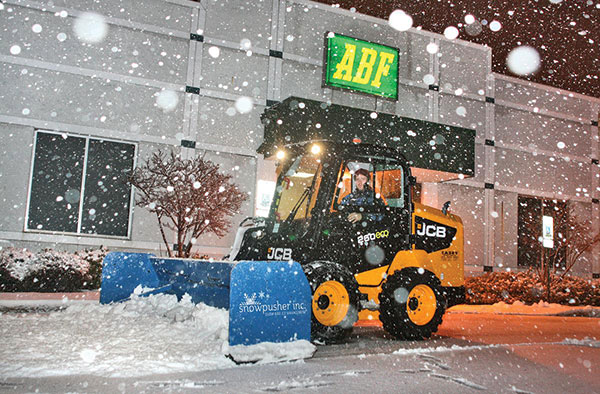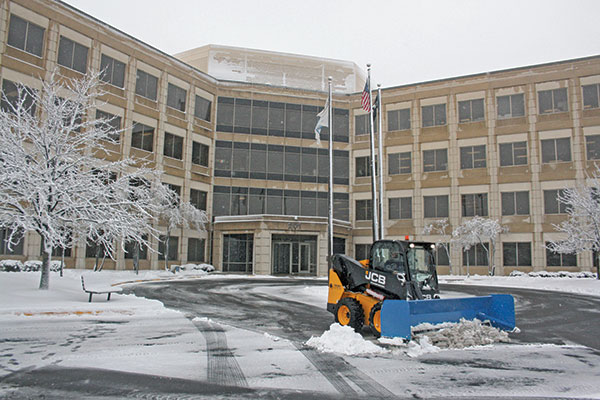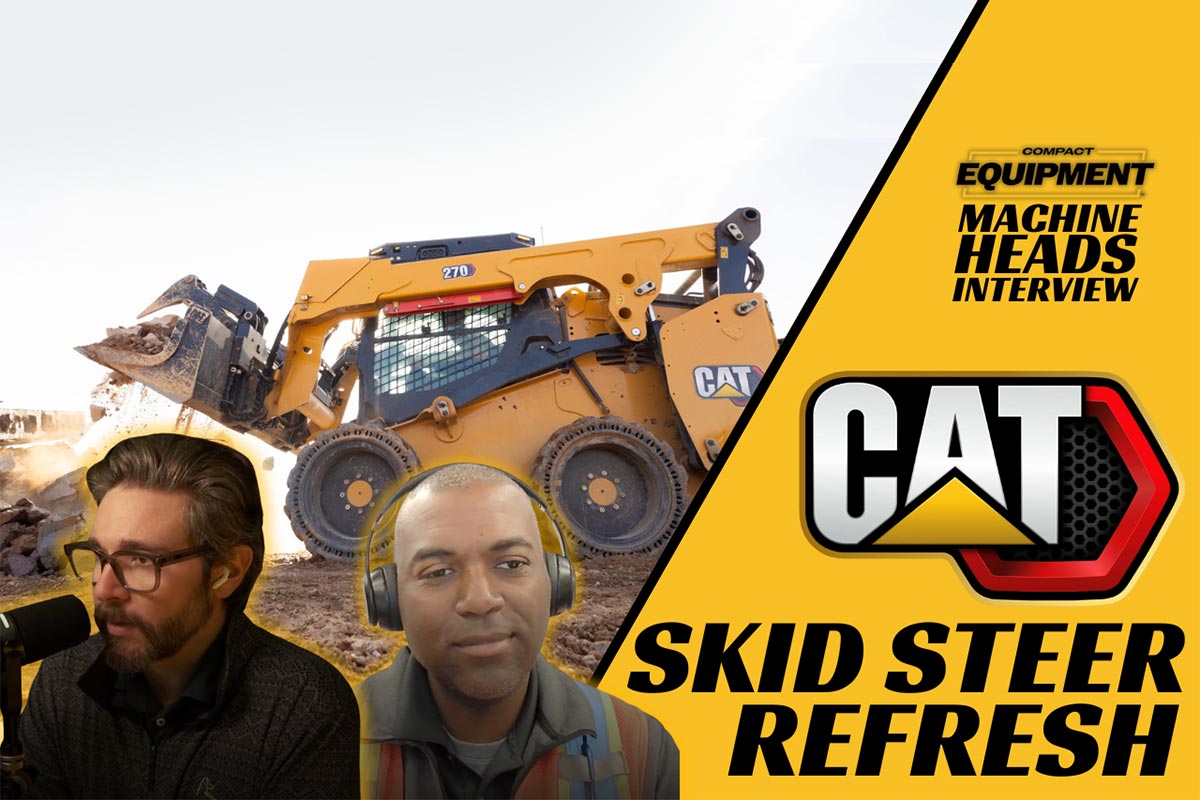Take this Job and Shovel It
We all know that skid steers are extremely versatile, packing a powerful punch in a small package. Throughout the spring and summer months (and year-round in warmer climates), these tough little workhorses can be found mowing large corporate campuses, building retaining walls, sweeping driveways and performing many other tasks efficiently and effectively. But it’s January now, and cold and snow have brought those types of outdoor pursuits to a screeching halt throughout much of the United States. However, the truth is that many skid steers don’t spend the winter season hibernating inside a garage or a shed. That’s because their owners have discovered the fact that these little machines are aces when it comes to snow removal.
Turning White to Green
Joe Paweleck of Chicago knows exactly what it takes to remove snow, and lots of it. After working in the snow removal industry for more than 15 years, Paweleck decided it was time to strike out on his own. He launched his own snow removal company, Snowpusher Inc., during the winter of 2010. The company currently has four full-time, year-round employees and employs approximately 180 seasonal employees during the winter months.

Snowpusher Inc. focuses completely on snow removal for commercial sites like truck stops, shopping centers, corporate campuses and factories. From its headquarters located near the intersection of Route 53 and Interstate 90 in Chicago’s northwest suburbs, the company serves customers within a 35- to 40-mile radius. When Paweleck and his full-time staff aren’t removing snow during the winter season, they’re performing necessary maintenance on their equipment and signing up more commercial accounts to grow the business.
“From what we’ve seen, annual budgets tend to be due in June or July,” Paweleck says. “But really, the bid process is never-ending. We try to focus on signing up accounts that require 24-7 service, like truck stops, for example. Obviously, the more we can work during our five-month season, the better.”
A New Generation of Equipment
Snowpusher Inc. has always used some skid steer loaders in its snow removal operations. “Skid steers can handle almost any type of snow removal except for the situations when you have to push snow a long distance,” Paweleck explains. “That’s when you need a wheel loader. Even then, we use our skid steers for detail work on the sites that require loaders.”
In 2011, Snowpusher Inc. decided to shop around for some new skid steers from a few different manufacturers. That brought the company to its local JCB dealer, JCB of Chicago, to take a look at JCB’s New Generation skid steers. Snowpusher Inc. ended up purchasing 10 JCB New Generation 260 models for one primary reason — the outstanding visibility from inside the cab. “We had a lot of different options, but the visibility of the JCBs spoke for itself,” Paweleck says. “It helps us do our jobs more quickly and that allows a higher level of service for our customers.”

Even though he liked the JCB skid steer’s visibility, it still took some convincing to get Paweleck to invest in 10 machines. “I didn’t quite trust the single-arm boom design at first — what JCB calls its ‘Powerboom,’” Paweleck says. “So, we got our hands on a demo and brought it out to our main yard to see how it would perform, played with it a little bit. We used the skid steer to pick up very large, very heavy concrete blocks. That little machine was driving around in circles holding up that concrete block up in the air, and it never once came close to tipping over. I was sold.”
Challenges and Opportunities
When asked what makes snow removal a demanding business, Paweleck points to the innate unpredictability of winter storms. “Every storm is different, and weather forecasts are only so accurate,” Paweleck says. “While you’d think that the big storms would give us the most trouble, the little 1- to 2-in. snowfalls come with more uncertainty. What are the ground temperatures? What are the air temperatures? Will the snowfall melt right away, but then refreeze that night? Should we pre-salt or just wait and plow? We have to carefully consider our options because we don’t want to over-service our customers. That can make it look like we’re taking advantage of them.”
Technology also enters into the Snowpusher Inc. business plan. The company attaches GPS units to all its salt trucks. “That way, if someone says they were injured by slipping and falling on one of the properties we service, we have proof that we were there and applied salt to that exact area,” Paweleck explains. “It’s one of those little things we do that can help both us and our customers avoid costly insurance claims.”
For consistency and reliability, every season, the same Snowpusher Inc. employee always clears the same pre-designated customer locations. Before the season begins and snow begins to fly, Paweleck’s team creates a color-coded map and walks their operators through their designated sites. To ensure quality service, Snowpusher Inc. has “tailgate talks” with each operator once every three to four storms to see how they’re doing and to answer any customer requests or concerns.
Paweleck and his team outfit their skid steers with plows for snow removal at multi-residential sites like apartment complexes and with pusher blades for large parking lots. Each machine spends the winter months at its designated site so that it’s immediately accessible when a winter storm hits. “We don’t like to trailer our machines from job to job if we don’t have to,” Paweleck says. “By parking them at our larger accounts, we can save a lot of money in fuel and other transportation costs.”
Snowpusher Inc. is also savvy about how it invests in equipment. The purchase of the 10 skid steers in 2011 was spawned by the IRS’s Section 179 Tax Deduction, an incentive that the U.S. government created to encourage equipment investments. This tax code basically allows businesses to deduct the full purchase price of qualifying equipment and/or software purchased or financed during the tax year. That means that
Snowpusher Inc. was able to deduct the full purchase price of its skid steers from its gross income.
“We actually took advantage of that incentive again in late 2012,” Paweleck says. “We turned in the JCB machines we purchased in 2011 and traded them for 13 new ones. It’s almost like we’re able to use them for free throughout the season. You have to stay on top of those types of programs — they can really work to your advantage as a small businessperson.”
What’s next for Snowpusher Inc.? The company is considering entering a previously untapped market. “We’re thinking about how we can begin servicing single family homes,” Paweleck says. “The key is being able to service large blocks of residences — not just one here or there, scattered throughout the city. We’re always looking for new opportunities to streamline our operations and serve more customers. I really enjoy the challenge of finding new ways to save money, make money and grow our business, one step at a time.”
Lynette Von Minden is a public relations writer with Swanson Russell, based in Lincoln, Neb.




